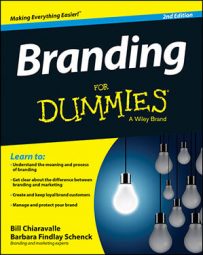Brand licensing is one of the most widely used ways to extend a brand, largely because it allows a brand to achieve new product introductions without gearing up operationally for the task. Instead, the brand licenses its name to a manufacturer that takes on all the production and marketing efforts of the new product.
When you license your brand, basically you rent your legally protected brand identity to another business that will manufacture and sell products carrying your name.
To the consumer, licensed products look just like branded products. So before you consider a license agreement, be sure the agreement will result in products that meet all the brand characteristics and avoid all the brand-damaging landmines.
Understanding licensing lingo
Brand licensing comes with a language of its own. The terms you hear most include the following:
Licensing: Leasing a trademarked or copyrighted brand identity, including brand name, logo, tagline, or other form of brand signature, to another business, usually for use on a product or product line.
Licensor: The owner of the brand and the renter of the rights.
Licensee: The business renting rights to use the brand identity.
Contractual agreement: The formal permission document that defines how the licensee may use the brand and how the licensor will be paid.
The contract should include specific usage purposes, limitations on applications, geographic area, time period, payment schedule, and terms. Rely on an attorney to draw up and review the agreement, and obtain formal signatures. Handshakes are great, but only after the ink is dry.
Royalty: In most contracts, the licensee agrees to pay the licensor a guaranteed minimum payment plus a royalty on all sales that exceed the minimum payment amount.
Benefits of licensing
In a good licensing agreement, both parties benefit. The licensor gains the benefit of a brand extension and revenue (via royalties) without any investment in product development, production, or marketing. The license agreement provides a no-cost form of brand value leverage.
The licensee gains the benefit of the licensor’s brand name, which lends immediate awareness, distinction, and trust to the manufacturer’s product rollout. Without the need for any brand development investment, the licensor is able to achieve marketplace prominence and command a premium sales price thanks to the lease of the licensor’s brand name.
Licensing steps to follow
Most license agreements result in what looks to the consumer like either a brand-produced product or a cobranded product. For instance, Disney licenses its name to Timex, and Timex makes watches featuring Mickey Mouse. The consumer thinks the two teamed up to make the watch possible, and they did, although it was likely through a licensing agreement rather than through a manufacturing and marketing partnership.
How your branded product gets to market is a behind-the-scenes issue that’s invisible to consumers. The consumer simply sees the product, links it to your name, and decides whether the product enhances or diminishes your brand image.
Give licensed offerings the same level of consideration and scrutiny that you give any other brand or line extension.
Build, protect, and manage your brand and its esteem.
Otherwise, few licensees will find your name worth the lease price.
Establish licensing guidelines.
Include how far you’ll allow your brand to range — in terms of product categories, price range, and distribution channels — through licensed products.
License only to well-managed, well-respected, and well-financed companies.
Limit licensing partners to one or only a few in each product category or geographic area.
Implement a comprehensive licensee training program to ensure that all licensed products are developed and marketed to your brand standards.
Most licensee training programs begin with education that immerses licensees in the brand image and usage guidelines. They also cover the steps licensees must take in order to gain approval of products, packaging, and any materials or communications that carry the brand identity.
Monitor and protect the way your brand is presented via licensed products in the same way you protect its usage within your own organization.
Be vigilant regarding misuse of your brand identity or infringements on your license.

